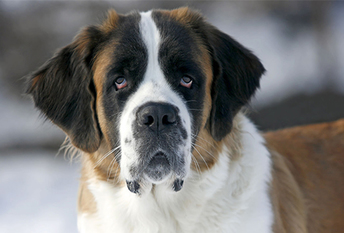The Leonberger has a magnificent double coat that comes in lion yellow, golden or reddish-brown. Although it’s beautiful when he has just been bathed and groomed, its natural state is best described as damp and leafy. The Leo loves being wet and muddy, and if his coat looks clean afterward, it’s because all the dirt and debris has dropped onto your floor or furniture.
Leos shed -- there’s no getting around it -- but a thorough weekly brushing will help reduce the amount of hair floating around your house. Comb the feathering on the ears, legs and tail to remove or prevent tangles. If you can’t take the time to do this, don’t get a Leo.
Clean the ears as needed and trim the nails weekly. Brush the teeth with a vet-approved pet toothpaste for good overall health and fresh breath.
If you live in a city apartment or a house on a small, suburban lot, this may not be the breed for you. Adult Leonbergers are generally calm and subdued, but they still need to have some vigorous exercise once a day.
Puppies and adolescents are active and exuberant. Adult dogs can benefit from jogging or hiking with their owners or keeping pace alongside a bicycle.
A large yard with a tall, strong fence is the ideal place for a Leo to run around. Remember, these are working dogs. Drafting—that is, pulling a cart—andagilitytraining are two good ways for a Leo to get the activity he or she needs.
Leos are huge dogs and they require a tremendous amount of high-quality, dry dog food. Their nutritional needs must be met for optimum health so a food specifically formulated for giant breeds is indicated.
To prevent gum disease, tooth decay and bad breath, strictly dry kibble should be fed.
Any diet should be appropriate to the dog’s age (puppy, adult, or senior). Some dogs are prone to gettingoverweight, so watch your dog’s calorie consumption and weight level.
Treatscan be an important aid in training, but giving too many can cause obesity. Learn about whichhuman foodsare safe for dogs, and which are not.
Check with your vet if you have any concerns about your dog’s weight or diet.Clean, fresh water should be available at all times.
As with all canines, proper exercise and nutrition, routine vet exams, and parasite prevention are keys to a happy and healthy life.
Large dogs such as Leos can experience bloat, where the stomach twists and gas is trapped inside. Bloat can quickly be fatal, and it is important to know its signs, such as drooling, restlessness, enlarged abdomen, and attempts to vomit.
Owners of at-risk dogs can consider the preventative measure of having their dog’s stomach surgically tacked to the abdominal wall.
Highly intelligent, the Leonberger is a relatively easy dog to train. It is essential that the trainer be assertive but gentle. Using delectable treats will make the training sessions more successful and enjoyable. Positive reinforcement is the only method that should be used while training the Leo. Being forceful will lead to the dog balking and becoming unresponsive during the session.
Leonbergers do well in obedience trials and rather enjoy them. With regular and consistent training, this breed can attain Utility Dog titles. Leos also do very well as therapy dogs and people in hospitals and nursing homes enjoy visits with them.
Leo puppies should besocializedby being gently exposed to a wide range of people, animals, and settings before the age of 20 weeks. Groupobedience classeswill help a Leo learn to be a well-mannered companion and canine citizen.











